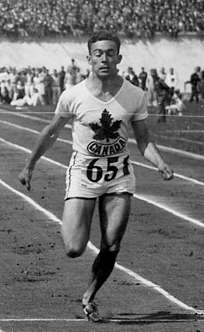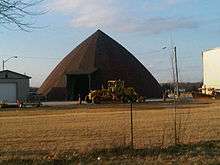John Fitzpatrick (athlete)
 John Fitzpatrick at the 1928 Olympics | ||||||||||||||||
| Personal information | ||||||||||||||||
|---|---|---|---|---|---|---|---|---|---|---|---|---|---|---|---|---|
| Full name | John Richardson Fitzpatrick | |||||||||||||||
| Nickname(s) | Johnny Fitzpatrick | |||||||||||||||
| Citizenship | Canadian | |||||||||||||||
| Born |
March 21, 1907 Toronto, Ontario, Canada | |||||||||||||||
| Died |
July 9, 1989 (aged 82) Toronto, Ontario, Canada | |||||||||||||||
| Education | Engineering (1933) | |||||||||||||||
| Alma mater | University of Toronto | |||||||||||||||
| Occupation | Athlete, engineer, inventor | |||||||||||||||
| Height | 5 ft 9 in (175 cm) | |||||||||||||||
| Weight | 132 lb (60 kg) | |||||||||||||||
| Spouse(s) | Grace Edith Cowan | |||||||||||||||
| Sport | ||||||||||||||||
| Country | Canada | |||||||||||||||
| Sport | Track and field (1927–1930), Canadian football (1928–1932) | |||||||||||||||
| Event(s) | Sprint | |||||||||||||||
| University team | Toronto Varsity Blues | |||||||||||||||
| League | Interprovincial Rugby Football Union (IRFU) | |||||||||||||||
| Club | Hamilton Olympic Club | |||||||||||||||
| Team | Hamilton Tigers | |||||||||||||||
| Achievements and titles | ||||||||||||||||
| Olympic finals |
1928 Summer Olympics: Men's 200 m: Fifth place | |||||||||||||||
| Personal best(s) |
100 m – 10.6 (1930) 200 m – 21.7e (1928)[1][2] | |||||||||||||||
Medal record
| ||||||||||||||||
| Updated on January 2, 2015. | ||||||||||||||||
John Richardson Fitzpatrick (March 21, 1907 – July 9, 1989) was a Canadian athlete who competed in the 1928 Summer Olympics.[1]
Background
Fitzpatrick was born on March 21, 1907 in Toronto, Ontario, Canada to John Duncan Fitzpatrick and Agnes Elizabeth Willson.[3][4]
While enrolled at the University of Toronto, he was a member of the intercollegiate championship team in 1927. He completed a degree in engineering at the University of Toronto, graduating in 1933. In 1934, he married Grace Cowan, the daughter of Hugh Cowan and the sister of James Alexander Cowan, in Toronto. They had two sons, John McGillivray Fitzpatrick and Murray Alan Stuart Fitzpatrick.[4]
Career
After serving briefly with the Royal Canadian Mounted Police, he went on to work at Shell Canada researching diesel engines and fuels. A career in sales followed with construction companies in Toronto and Hamilton. In the early 1960s, Fitzpatrick worked for the Ontario's Ministry of Highways, rising to the position of deputy chief of the equipment section.[4]
Athlete
Fitzpatrick raced out of the Hamilton Olympic Club. He played with the Hamilton Tigers as a senior member in 1926 and 1928,[5][6] wherein they won the Grey Cup.[7][8] In the same year, he was able to become part of Canada's Olympic track and field team. He competed in the 100 meters where he finished fifth place and in the 200 meter race where he finished as a semifinalist. He was also a member of the Canadian relay team where they competed in the 4 x 100 meter relay; they were disqualified.[1] In 1930, he won Canada's first medal at the inaugural 1930 British Empire Games held in Hamilton.[7]
When he entered the university, he was considered an important member of the University of Toronto Varsity Blues from 1929 to 1932. During his last year with the Varsity Blues, they were able to win the Yates Cup. He was also a leading member of intercollegiate track championship teams from 1927 to 1930. Within those three years, he won 10 medals wherein 7 of which are gold.[7]
In 1932 to 1933, he served in the University of Toronto Men's Athletic Directorate.[7]
Inventor

John Fitzpatrick invented a structure known as the Fitzpatrick Dome to store large quantities of road sand/salt mixtures used to treat roads in winter when ice and snow make driving hazardous. The igloo type design was helpful in areas where snowfall would otherwise accumulate on a flat-roof structure. The dome is a 20-sided conical shell 100 feet in diameter and 50 feet in height. As it is prefabricated, larger or smaller domes can be erected simply by adding or deleting rings.[9][10]
The first test structure was built in 1968 at a cost of C$17,000. The result was so successful that between 1968 and 1978, approximately 200 structures were erected in Ontario. John Fitzpatrick was granted a patent in 1972 for the invention. These structures continue to be used in Canada and internationally.[9][11]
While serving at the Ministry of Transportation in Ontario in the 1970s, John Fitzpatrick devised a bubbling system used in the St. Lawrence River to prevent ice from forming in the winter. The formation of ice had hindered ferries from connecting the people of the Frontenac Islands to the mainland. The invention pumps compressed air through a network of perforated pipes at the river bottom that run between the docks and along the routes of the ferries. The bubbles hinder ice from forming which allows the ferries to function regularly in the winter.[12][13]
Death
Fitzpatrick died on July 9, 1989 in Toronto at the age of 82. His resting place is at the Sanctuary Park Cemetery in Toronto.
References
| Wikimedia Commons has media related to John Fitzpatrick (athlete). |
- 1 2 3 John Fitzpatrick. sports-reference.com
- ↑ John Fitzpatrick. trackfield.brinkster.net
- ↑ "Deaths, Memorials, Births". Toronto Star. July 10, 1989. p. A17.
- 1 2 3 "J. Fitzpatrick designed salt domes for Ontario". Toronto Star. July 11, 1989. p. A17.
- ↑ "50-Yard mark tied by Percy Williams". The Canadian Press. Montreal, Quebec. April 15, 1928.
- ↑ "All-Time Teams and Rosters". Hamilton Tiger-Cat Alumni Association. Retrieved January 2, 2015.
- 1 2 3 4 "Hall of Fame: Johnny Fitzpatrick, Class of 1934". Toronto Varsity Blues. Retrieved January 2, 2015.
- ↑ "Fitzpatrick Hangs Up Spiked Shoes". The Vancouver Sun. May 14, 1932. p. 10.
- 1 2 Contamination Committee of Ontario's Ministry of the Environment and Ministry of Transportation and Communication (May 1978). "Bulk Storage of Salt and Sand/Salt Mixtures" (PIBS 759). External link in
|title=(help) - ↑ Fitzpatrick, John R. (Canadian Intellectual Property Office) (April 1972). "CA 896836: Segment Building Structure".
- ↑ Culbert, Terrence Patrick (February 2004). "Winter Crossing". The Amherst Island Beacon (312). Archived from the original on November 7, 2011.
- ↑ "Howe Island ferry, bubbler system ready for winter". Kingston Whig-Standard. November 27, 2014. Retrieved January 2, 2015.
- ↑ "Refurbished bubbler system in place for Howe Island". Wolfe Island. December 8, 2014. Retrieved January 2, 2015.
Further reading
- Hawley, Samuel (2002). I Just Ran: Percy Williams, The World's Fastest Human. Vancouver: Ronsdale Press ISBN 978-1553801269